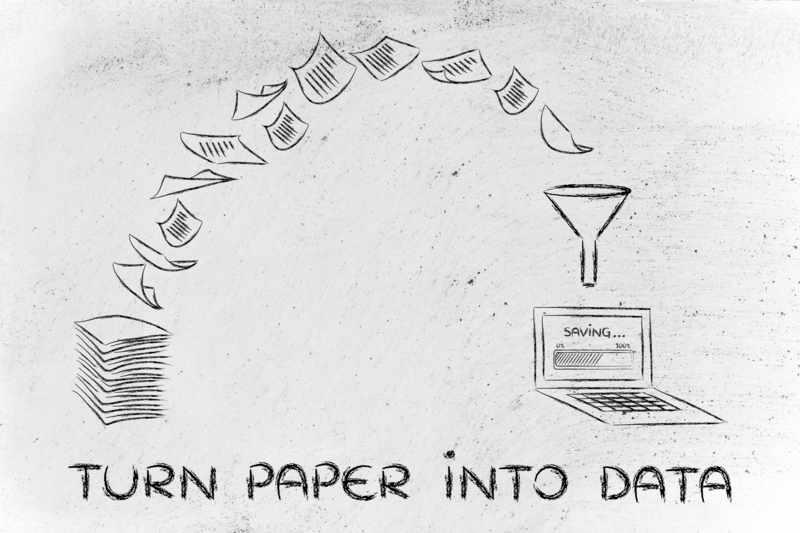Where and How to Recycle Damaged Pots and Pans: A Comprehensive Guide
Is your kitchen cluttered with unusable cookware? If so, you're not alone! Every year, millions of damaged pots and pans end up in landfills, but they don't have to. Recycling old cookware is essential for a sustainable planet. Whether your pots and pans are scratched, warped, or too battered for culinary use, there are responsible ways to dispose of them. This complete guide will show you where and how to recycle damaged pots and pans-- responsibly and efficiently.
Why Is Recycling Old Pots and Pans Important?
Our kitchens often become graveyards for broken or outdated cookware. Instead of letting these items accumulate dust or contribute to landfill pollution, you can take actionable steps towards sustainability. Recycling damaged pans and pots offers several undeniable benefits:
- Reduces landfill waste: Cookware made from metal, non-stick coatings, and plastics can take centuries to decompose.
- Recovers valuable materials: Items like aluminum and stainless steel can be melted and reused, conserving natural resources.
- Promotes sustainable living: Recycling old cookware aligns with eco-friendly, zero-waste lifestyles.
- Prevents harmful chemicals from seeping into the environment: Especially with non-stick pots and pans, safe disposal avoids soil and water contamination.

Understanding the Materials: What Are Pots and Pans Made Of?
Before you recycle old cookware, it's important to understand what your pots and pans are made of. This affects how and where you can recycle them.
- Stainless Steel: Durable, rust-resistant, and recyclable almost everywhere.
- Aluminum: Lightweight, excellent heat conductor, and widely accepted for recycling.
- Copper: Highly valuable to scrap yards, but not all recycling centers accept copper.
- Cast Iron: Heavy, virtually indestructible, and fully recyclable.
- Non-Stick Coated (Teflon or Ceramic): Trickier to recycle due to coatings, but options are available.
- Glass: Used in lids or specialty bakeware, glass must go to specific facilities.
Where Can You Recycle Damaged Pots and Pans?
Each city and town may have different facilities and policies on recycling cookware. Here are the most common places to consider:
1. Local Scrap Metal Yards
Scrap yards are one of the best destinations for recycling metal pots and pans. Most will accept any pure metal items such as cast iron, aluminum, and stainless steel.
- Remove Plastic Handles or Non-Metal Parts: Only bring metal components; use a screwdriver if necessary.
- Check for Coatings: Some yards do not accept non-stick or glass-coated items. Call ahead.
- Get Paid: Metal recycling can occasionally earn you a small payment, especially for copper or brass items.
2. Municipal Recycling Programs
Many cities offer curbside recycling for metal goods, but not all accept cookware. Here's what to do:
- Contact Your Local Waste Authority: Ask if they accept metal cookware in your curbside bin or at drop-off points.
- Special Collection Events: Some towns organize special recycling events for household items, including old pots and pans.
3. Recycling Centers (Transfer Stations)
These facilities often have dedicated bins for scrap metal or have relationships with recycling processors for various cookware materials.
- Find the Nearest Center: Use online platforms like Earth911 or RecycleNation to find facilities near you.
- Preparation: Remove all non-metal parts when possible, and check if the facility accepts non-stick items.
4. Retailer Recycling Programs
Certain cookware brands and retailers now offer take-back or recycling programs for their products:
- Contact the Manufacturer: Brands like Calphalon and Le Creuset may have recycling or takeback policies.
- Retail Store Drop-Offs: Some stores collect old cookware during promotional recycling drives.
5. Donation and Upcycling Opportunities
If your old pots and pans still have life left, consider these alternatives:
- Local Thrift Stores or Charities: Items in usable condition can benefit families in need or be sold for charity.
- Shelters or Soup Kitchens: Non-profits and community centers often welcome gently used kitchen equipment.
- Upcycling or DIY Projects: Creative minds have turned old pots into flowerpots, chandeliers, or art! Give your pans a new life beyond the stove.
How to Prepare Your Pots and Pans for Recycling
Now that you know where to recycle damaged cookware, the next step is preparation for recycling. Proper preparation ensures your items are accepted and processed efficiently.
Step-by-Step Guide for Prepping Cookware
- Clean Thoroughly: Remove all food residues, oils, and grease. Scrub pans with hot, soapy water to avoid contamination.
- Remove Non-Metal Components: Take off plastic handles, glass lids, silicone coatings, and rubber parts. Use pliers or screwdrivers if needed.
- Sort by Material: Sort cookware by type (aluminum, steel, copper) for easier processing and, possibly, better scrap pricing at metal yards.
- Check for Non-Stick Coatings: If the pan is non-stick or ceramic coated, verify if your local recycling facility or scrap yard will accept it.
- Bundle Small Items: Tie small pots or pans together to avoid losing them during pick-up or drop-off.
Special Instructions for Non-Stick and Ceramic-Coated Pans
Non-stick coatings (such as Teflon) can be toxic if improperly handled--never incinerate these items at home or dispose of them in regular trash where laws prohibit.
- Contact the Manufacturer: Some brands participate in non-stick cookware recycling, removing the coating first.
- Special E-Waste Facilities: Some recycling centers treat non-stick as e-waste or as hazardous materials--call ahead for clarification.
- Dispose Responsibly: If true recycling is not available, ensure these pans are disposed of at approved waste transfer stations to minimize environmental harm.
What Happens After Pots and Pans Are Recycled?
Ever wonder what happens after you recycle your old cooking pans? Your effort has a tangible impact:
- Materials Are Sorted: Recyclers use magnets and other tools to separate metals such as iron, aluminum, or copper.
- Melting and Refinement: The pots and pans are melted at high temperatures, purified, and formed into new metal products.
- Reused in New Products: Recycled metals from cookware commonly appear in automotive parts, construction materials, electronics, and--yes--even new kitchenware.
By recycling, you help close the resource loop, directly reducing the demand for raw materials and lowering your carbon footprint.
Common Questions About Recycling Damaged Cookware
Can Non-Stick Pans Be Recycled?
Recycling non-stick pans is challenging but not impossible. Most regular curbside recycling programs will not accept Teflon-coated pans, but scrap metal yards may do so if you remove the non-metal parts. Always call first and consider brand take-back programs.
Are Glass Lids Recyclable?
Glass lids are not always accepted in curbside recycling because cookware glass often contains additives for heat resistance. Check if your local recycling center accepts heatproof glass--otherwise, dispose of at a waste transfer station or repurpose the lid.
What If My Pots and Pans Are Severely Burned or Rusted?
Badly damaged cookware is usually still recyclable, as the metal can be melted down. Remove as much rust or debris as possible before recycling.
Can I Put Pots and Pans in the Regular Trash Bin?
Only as a last resort. Most municipalities urge residents to avoid putting large metal items in regular trash due to landfill space and recycling potential. Always explore local recycling options first.
Creative Alternatives: How to Reuse and Upcycle Old Pots and Pans
Not every pot needs to be recycled in the traditional sense! Here are some innovative and eco-friendly ways to repurpose old cookware:
- Planters: Drill drainage holes and turn battered pans into quirky garden pots.
- Decorative Lighting: Use colanders for pendant lights or craft chandeliers from large pans.
- Garden Tools: Cast iron pans make durable outdoor scoops or even stepping stones.
- Storage Solutions: Organize tools or art supplies in deep stockpots.
- Wall Art: Hang vintage or oddly shaped pans for a rustic kitchen look.
Remember: Upcycling gives damaged pans a second life and reduces overall waste!

Helpful Resources and Tools for Finding Recycling Locations
- Earth911 Recycling Directory: Enter your zip code to find local recycling centers.
- RecycleNation: Search for recycling solutions near your home.
- Contact Local Waste Authorities: Google your area's solid waste department for guidelines and schedules for bulk/metal waste collection.
- Major Retailers: Call big-box stores like Best Buy or Home Depot to ask about occasional kitchenware recycling events.
Final Thoughts: Responsible, Eco-Friendly Cookware Disposal
Recycling damaged pots and pans is an important step toward greener living. Kitchens are the heart of the home, but they shouldn't be a source of environmental harm. With the right knowledge and preparation, you can ensure that every piece of cookware--no matter its age or condition--finds a new life.
By following these simple steps to recycle your old pans--or by donating, upcycling, or using manufacturer programs--you are making a positive difference for the planet. Share your efforts and tips with friends and help spread the word about responsible cookware recycling in your community!
Start today--empty out those kitchen cabinets, and give your old pots and pans a sustainable send-off!
